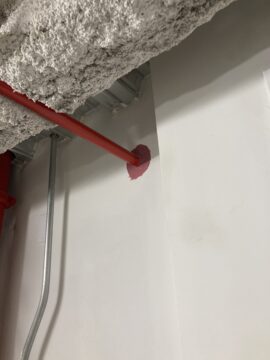The Science Behind Costly Pipe Breakdowns
An Inside Look at Incompatible Materials
Compatibility is the key to longevity. That’s as true for human relationships as it is for piping systems. Without compatibility, breakups—and breakdowns—are inevitable.
At SageWater, we see a high volume of premature piping system failures due to the use of incompatible materials. Think of a mixture of metals, or plastics and sealants, that don’t play well together on a molecular level.
Unfortunately, the source of incompatibility problems isn’t always easy to pin down or prevent, because mistakes can occur at multiple points in the life of your piping. For example:
- Engineers who design the piping system can specify the wrong product.
- Contractors who build it can substitute the wrong materials.
- Plumbers who perform repairs may do the same.
- Manufacturers may not specify what’s compatible with their products.
In this post, we explore some of the issues behind material-based pipe degradation and point out what you can do to help mitigate the risks of failure in your building.
Bad Chemistry
Similar to human relationships, compatibility among piping and fixtures comes down to chemistry. When it’s not right, things will start to fall apart.
Mismatched Metals
When dissimilar metals, like steel and copper, are brought together in your piping, water will generate an electrolytic reaction that causes galvanic corrosion.
One of the most famous examples of galvanic corrosion occurred on the Statue of Liberty. The coating of asbestos originally inserted to separate the structure’s iron columns from its copper skin disintegrated and brought the dissimilar metals into contact, necessitating a major facelift.
Fortunately, trained plumbers know to avoid joining mismatched metals. For example, if they need to join a copper pipe to a galvanized iron pipe, they’ll use a dielectric union, which uses an elastomeric rubber gasket to separate the metals while creating a tight seal. (They might also use a brass fitting, especially for water distribution systems and when water quality is poor.)
Thanks to broader industry understanding, most multifamily properties don’t encounter galvanic corrosion unless an unskilled maintenance worker or resident attempts a repair.
Plastic Problems

Chemistry can wreak havoc on plastic piping and fixtures as well. CPVC piping, for example, is an amorphous polymer comprised of a jumble of long, chain-like molecules. Contact with incompatible products can break down the molecular chains over time and cause pipes to soften and crack.
These chemical reactions alone or in combination with moderate mechanical stresses—like pressure in the pipe or pipe hangers installed too tightly—lead to a process known as environmental stress cracking (ESC). The typical chemical culprits responsible for ESC are in ancillary products used in everyday piping projects, such as:
- Caulk
- Disinfectants
- Gaskets
- Lubricants and sealants
- Firestop
- Insulation
- Pipe hangers, clamps, and tape
- Dielectric unions
- Waterproofing
Some chemicals in these products may have no or very little effect on plastic pipes, and others will cause failure nearly 100% of the time. And as the number and diversity of these products proliferate, the risk of incompatibility rises exponentially.
Spotting and Stopping Incompatibility
Awareness matters. As an apartment or condo community manager, you need to be aware of what’s behind your walls. For example, what types of metal and plastic piping do you have, and when was it installed? You’ll also want to track early warning signs of piping system failures. In addition to obvious leaks, the symptoms of possible ESC or other incompatibility troubles can include:
- Cracks, dents, or changes to the appearance of pipes (flaking, discoloration, etc.)
- Water stains either beneath plumbing pipes or on walls
- Metallic taste or discolored water (brown or yellow) coming from taps
- Sudden decreases in water pressure
- Sewage odor, which can be gasses escaping from vents and drainpipes
If you start noticing and recording these symptoms frequently in a younger piping system, incompatible materials may well be a factor. On average, most healthy plumbing systems will last at least 30 years before they start failing, and your drain, waste, and vent systems can last a couple of decades longer. When in doubt, hire an expert to perform an assessment; they can also give you information to help you determine when and how to remedy the situation.
Of course, you also want to be sure that your staff doesn’t introduce problems when they work on or near piping. Prior to any repairs or maintenance, make sure they carefully check manufacturer documentation so they avoid ancillary products known to cause bad chemical reactions. For even greater confidence, your team can consult directly with the manufacturer since documentation may not be current. There’s simply too much at stake not to cover all the bases.
Similarly, don’t be shy about asking your outside plumbing experts or contractors compatibility questions. The more people you have looking out for the right match, the better the chances that your system performs at the highest level and residents live happily ever after.
We’d love to hear from you.
Thanks for reading our blog! Contact us any time with questions about Simply Smarter Pipe Replacement for multifamily apartment and condominium communities.


